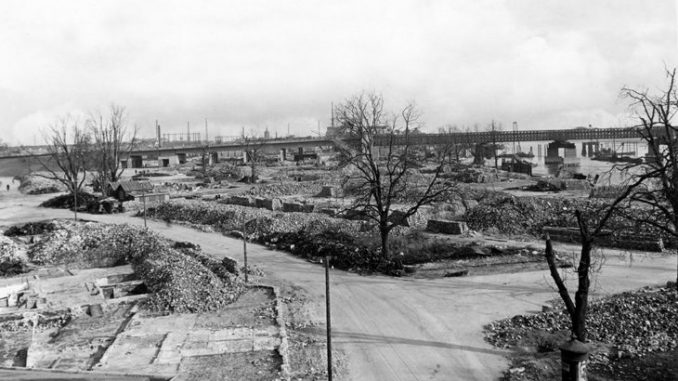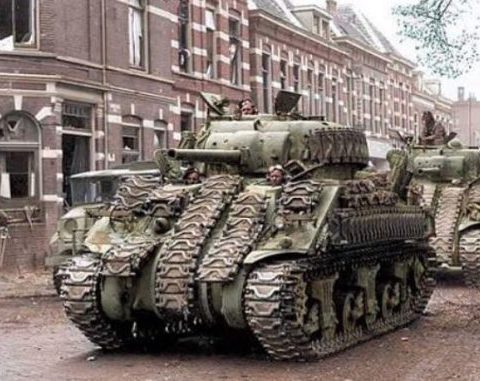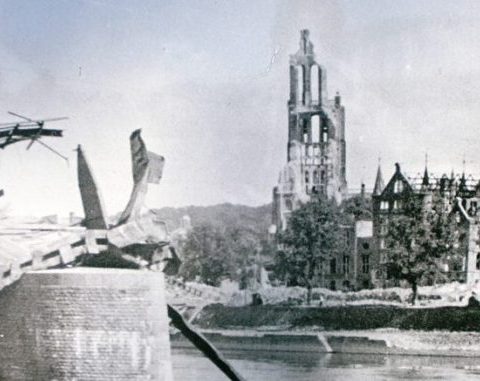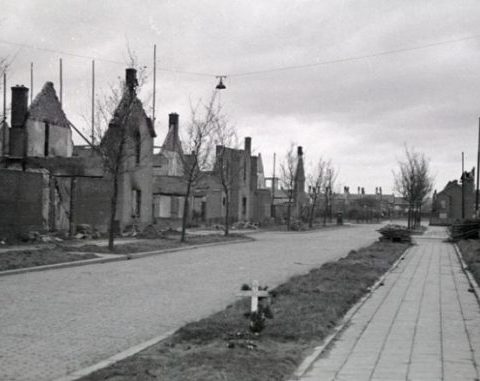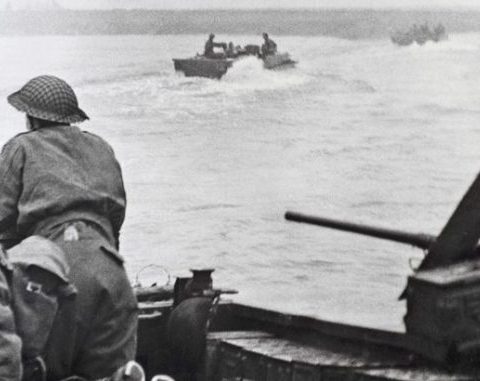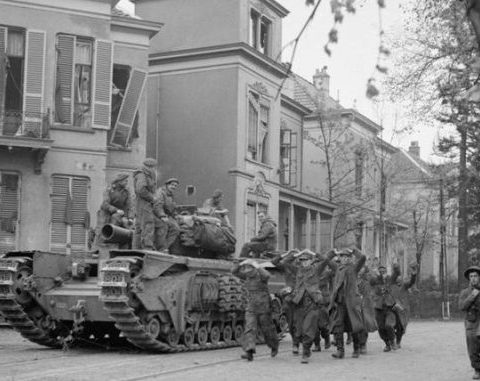The liberation of Arnhem started in the late evening of April 12, 1945 with the crossing of British troops from the Polar Bear Division over the IJssel near Westervoort. On April 15, the soldiers of the 49th Infantry Division reached Burgers’ Zoo and the whole of Arnhem was liberated.
The military operation had cost nearly 200 casualties on the Allied side: 62 killed and 134 wounded. The number of German casualties is not entirely clear even 75 years after the war. Different sources mention different numbers. From 160 dead and 400 prisoners of war to 400 dead and 1,600 prisoners of war.
For the Allies, the liberation of Arnhem was no more than a footnote in the path to the end of the war. Arnhem was only an intermediate station for the British. After the liberation of Arnhem they moved further north and west to liberate other villages and cities in the Netherlands.
The Dutch authorities preferred not to see the people of Arnhem return to the city immediately. There was unexploded munition throughout the city. Everywhere lay the remains of people and animals. Facilities such as water and electricity did not function.
A plan was devised to have the population return in phases with the intention that everyone would be back in early 1946.
Destroyed, robbed
However, the Arnhemmers were not restrained. Immediately after the liberation, many people from Arnhem returned from their evacuation address. They found a destroyed and looted city.
More than ten percent of all homes in the city were completely destroyed, and another five percent were badly damaged. Houses that had survived the violence of war unscathed were almost impossible to find. Of the 23,505 homes in Arnhem, only 145 remained undamaged.
Hen Bollen was one of the first Arnhemmers to return after the liberation. He wrote about it:
“All shops, houses, offices robbed. Shreds of curtains fluttering from broken windows. Dozens of feral dogs and cats creeping through the streets. That deadly desolation, that horrible, ghostly sight of a ransacked city, in which no citizen is to be seen. The smell, that very strange, indefinable stench that hung everywhere, I will never forget all that in my life. ”
The summer of 1945 was used by the returned population to clear debris. People whose homes had been destroyed were housed in other homes whose residents had not yet returned. Emergency shops and emergency homes were built to help the population.
Images of the destruction in Arnhem were used by the national news media to help the people of Arnhem.
“Arnhem has to live again. But everything is missing. No hammer, no nail, no table, no chair is present. People of the Netherlands: help your countrymen. Help with your gifts. Arnhem is empty. Arnhem can use everything.”
The images and the call of the Polygoon news did not miss their effect. It led to the action “Amsterdam helps Arnhem.” Trucks full of household goods, clothing, tools and crockery were collected in Amsterdam and brought to Arnhem.
Many Amsterdammers volunteered to help clean up the debris. Those volunteers were initially looked at by the inhabitants of Arnhem. The authorities had also arrested arrested NSB members to work to clear up debris. A sign with the text “Only people from Amsterdam work here” helped.
Reconstruction
The reconstruction of Arnhem was tackled energetically. Already on July 24, 1945, the first meeting was held under the leadership of the new mayor Matser for the reconstruction of Arnhem.
It was decided to first map out the extent of the destruction in Arnhem.
After the inventory, a first reconstruction plan was drawn up. In that plan it was especially clear that the city government saw the destruction as an opportunity to build a New Arnhem. A better Arnhem. An Arnhem that was ready for the future. To achieve that, the planners went very far.
A lot of the houses that survived the war, did not survive the reconstruction plans.
To give an example: in the first plan, Musis Sacrum should be demolished to make way for a highway. Thank God some of the reconstruction plans were soon watered down, although under the leadership of Matser the idea of a New Arnhem was never completely abandoned.
The wound that Arnhem suffered from the war is still visible in the form of many scars.
But like many other cities that have suffered heavily from the war destruction, such as Coventry, Berlin or Caen, Arnhem has developed into a vibrant city. A city that looks to the future, but with an eye for the past.
The liberation of Arnhem:
Part 1: After the Battle of Arnhem
Part 2: The Liberation of Arnhem South
Part 3: The 2nd Battle of Arnhem
Part 4: Liberation of a ruined city
Part 5: Return in a lifeless city

